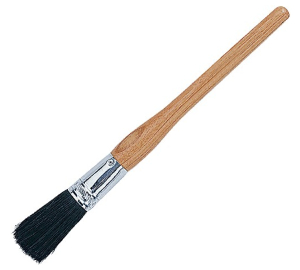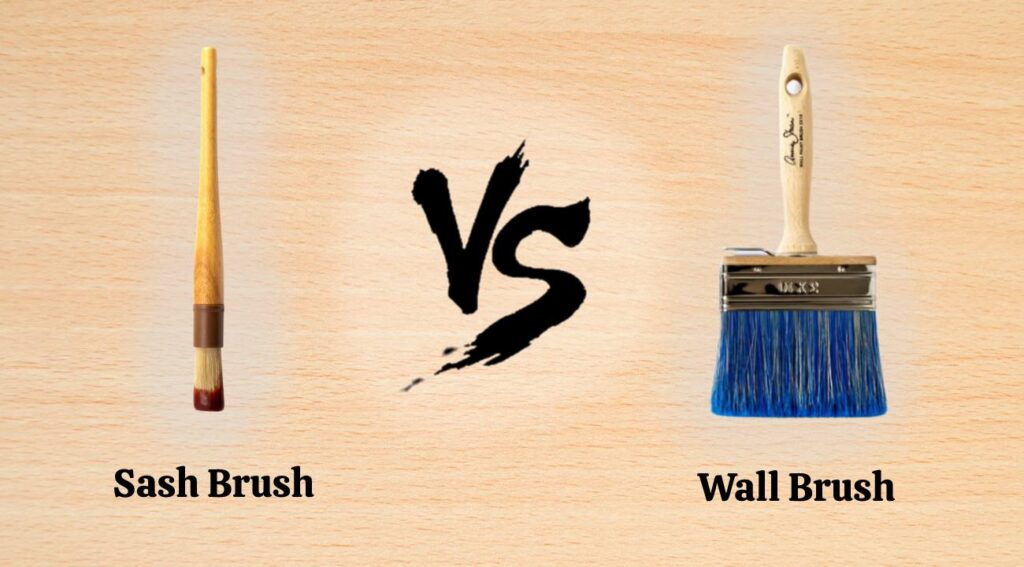Table of Contents
Paintbrushes come in a wide variety of designs and are made for various types of paint. For instance, for trimming around the house, and completing tricky indoor areas that need more precise cutting-in, such as around door frames or above skirtings, then a sash brush would be the perfect one to go for. But what is a sash brush? And what does it look like?
“Brushes that come with less filament or bristles and feature long slim heads and handles are called sash brushes. They tend to have blunt, tapered tips with soft edges. Sash-style brushes are excellent for painting small surfaces, as their bristles are perfect for precise and control applications.“
Sash brushes are designed in a way so they can reach into awkward areas like in-between window sashes and door frames, and it’s ideal for edging, cutting in, and use on profile surfaces. These brushes hold great precision and control, as they have fewer filaments or bristles. These round-headed sash brushes are quite popular amongst builders and decorators. It’s recommended to use a sash brush in conjunction with a standard brush to make the painting’s overall job quicker, easier, and more effective.
Types Of Sash Brush
Now that you know what sash brushes are and where they are used, it’s time for you to get familiar with some of the types of sash brushes. This way, you would be able to pick the right sash brush for the appropriate application. Depending on their sizes, shapes, or bristle type, there’re different sorts of sash brushes. However, we are going to talk about four kinds of sash brushes that most painters or decorators commonly use. And they are:
1. Round Sash Brush
These tiny round paintbrushes have soft edges and a blunt, tapered end that can range in size from 20 to 44 mm. They are frequently employed for painting furniture for decorative purposes, such as faux finishes.

2. Angle Sash Brush
The tip of angled sash brushes comes with a sloping edge, making them perfect for narrow surfaces or inaccessible places like window sashes, skirting boards, etc. They tend to have a short handle, and their bristles are cut on a sharp slant, creating clean lines. Thanks to their short handle, it offers excellent stability and maneuverability, so it’s not only the perfect option for windows but for detail work, such as edges, corners, molding, and grooves.

3. Oval Sash Brush
Oval sash brushes are perfect to use as an oil or chip brush or for applications of paint or glue. The sash brush is a common tool for precisely cutting and edging trim and other curved surfaces. Due to its oval shape, it does a good job at cleaning parts and crevices, dusting, and removing debris.

4. Flat Sash Brush
A flat brush has a long, tidy bristle and a narrow, long shape. Having a thin profile makes it simple to flip the paint. It is ideal for painting trim pieces like doors, windows, cabinets, etc.

Sash Brush vs Wall Brush
A wall brush comes with a short, thicker handle and offers a longer stroke, making them the right tool for covering flat surfaces and large areas. Whereas the slim shape and long handle of a sash brush make them ideal for covering the corner and edges of your house.

Wall brush features thicker bristles or filaments that can hold more paint. But the sash brush comes with less and thin bristle. Thus, it can’t hold much paint.
Wall brushes are ideal for painting large surfaces like the exterior, interior walls, or ceilings. On the other hand, the sash brush is great for window frames, casings, door frames, etc.
| Sash brush | Wall Brush |
| 1. It comes with a long and slim handle. | 1. It comes with a short and thicker handle. |
| Its bristles are thin and can hold less paint. | Its bristle is thick and can hold more paint. |
| Ideal for small-area applications. | Ideal for large-area applications. |
| The brush offers great precision and control. | The brush is not suitable for precise application. |










Leave a Comment